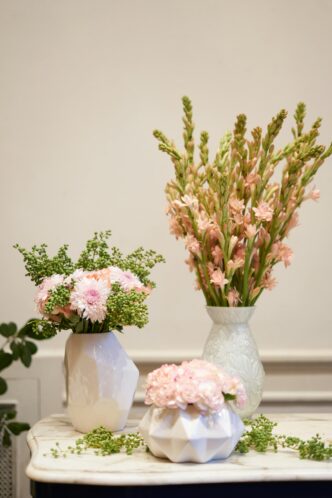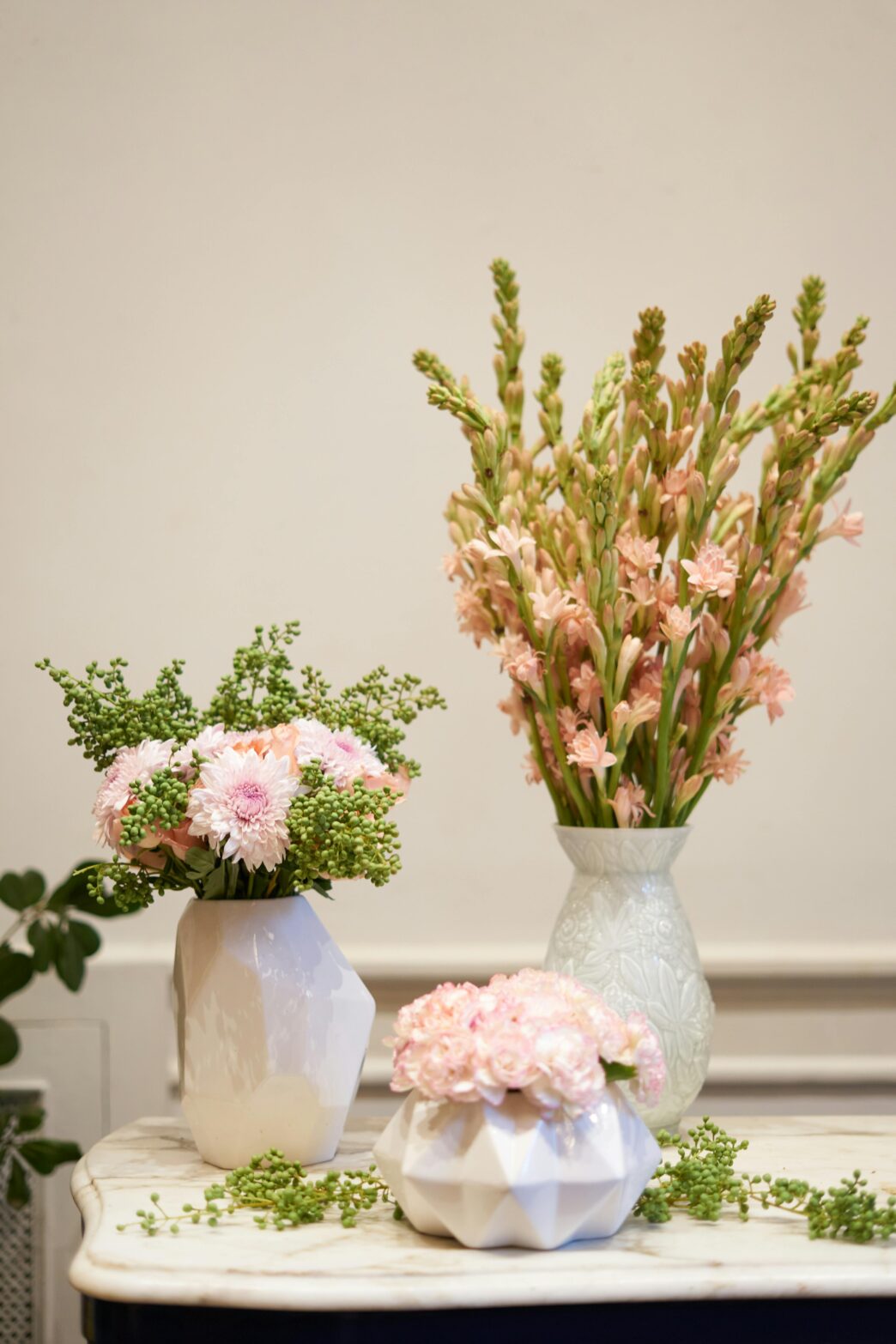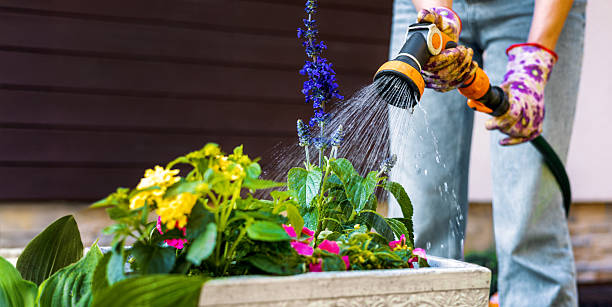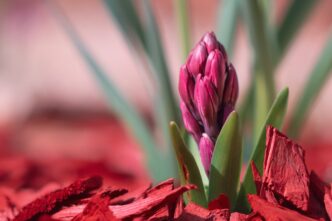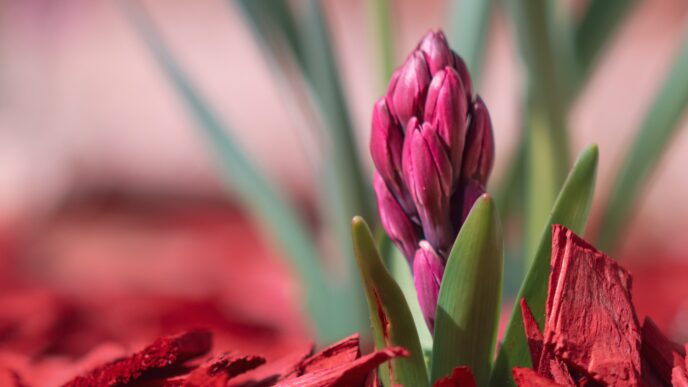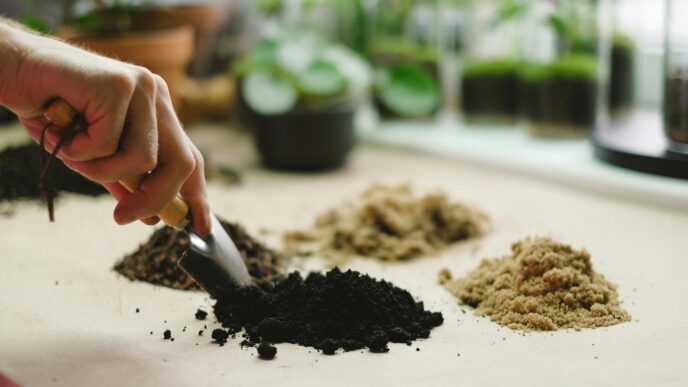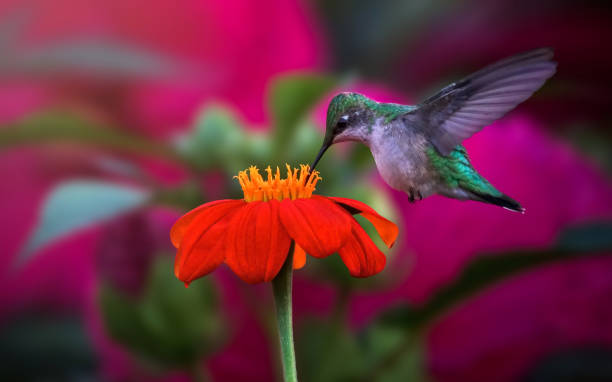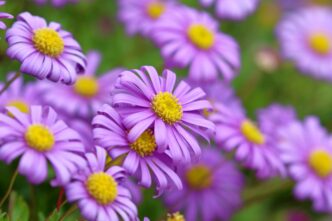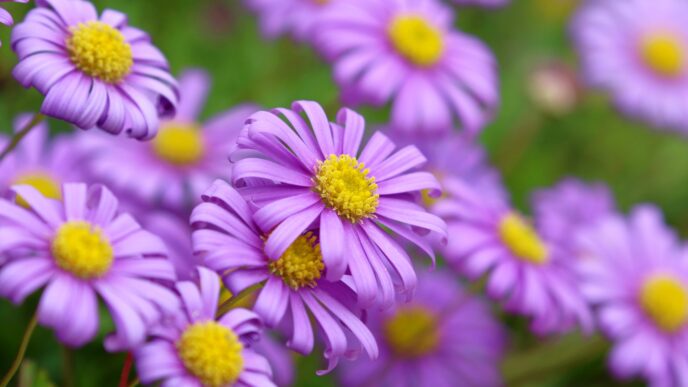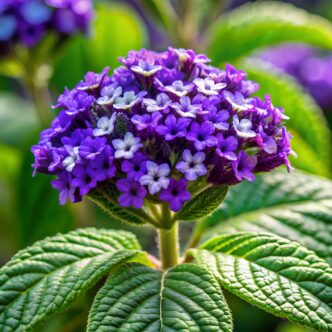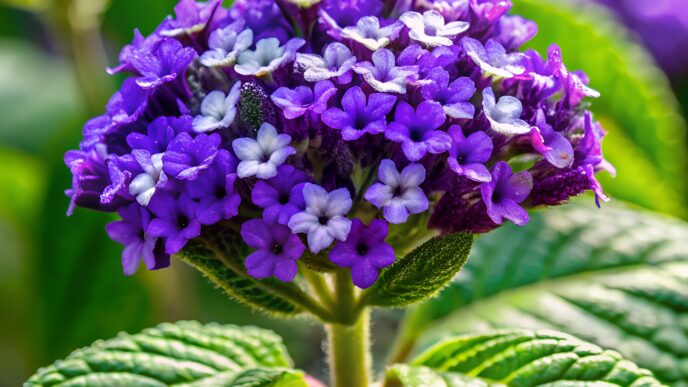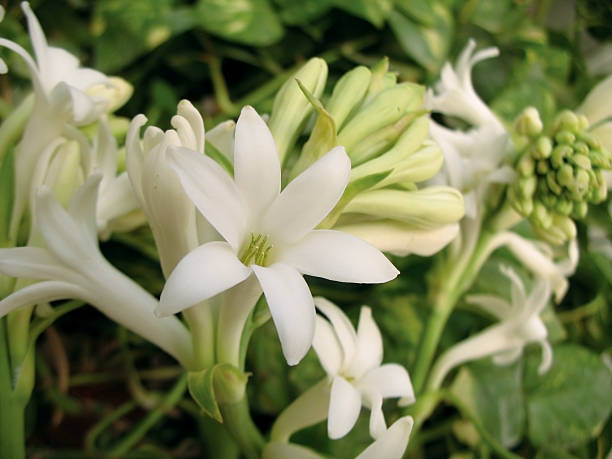
Grow and Care for Tuberose Flowers
Few plants can transform a garden quite like Polianthes tuberosa, better known as the tuberose. Famous for its creamy white, star-shaped flowers and sweet, intoxicating fragrance, tuberose has long been a favorite in tropical gardens, wedding bouquets, and perfume-making. Adding this plant to your garden is not just about beauty, it’s about creating an enchanting space filled with evening fragrance and timeless elegance.
What is Polianthes Tuberosa?
Polianthes tuberosa is a perennial flowering plant native to Mexico and part of the Asparagaceae family. Gardeners prize it for its tall spikes of fragrant white blooms that release their strongest scent at night, making it a perfect choice for moon gardens or patios where you relax in the evening. Tuberose flowers symbolize passion and sensuality, which is why they are often used in garlands, bridal arrangements, and luxury perfumes.
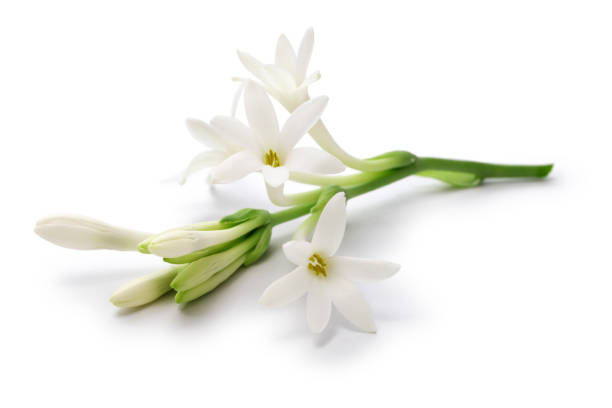
Ideal Growing Conditions for Tuberose
To grow tuberose successfully, you’ll need to create the right environment. Here’s what this tropical flowering plant loves most:
- Soil: Tuberose bulbs prefer sandy or loamy soil that drains well but holds enough moisture to keep roots hydrated. Mix in compost or organic matter for extra nutrients.
- Water: Keep the soil consistently moist but never soggy. Overwatering may lead to root rot, so let the top inch of soil dry slightly between waterings.
- Sunlight: Full sun is essential. Aim for 6–8 hours of direct sunlight daily for the best blooms.
- Climate: Tuberose thrives in USDA zones 8–10. In cooler areas, grow tuberose in pots so you can move them indoors during winter.
How to Plant Tuberose Bulbs
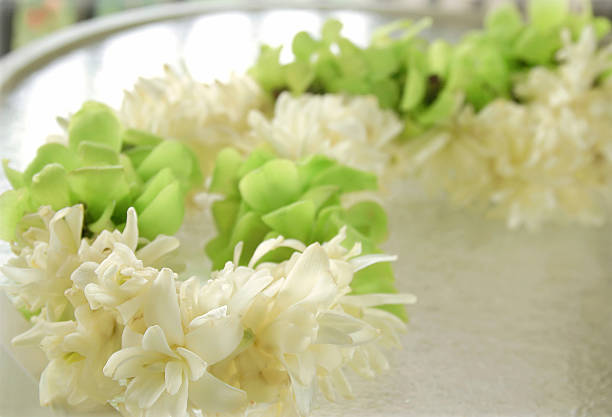
- Select Healthy Bulbs: Choose firm, plump tuberose bulbs free from mold or soft spots.
- Prepare the Soil or Container: Loosen the soil and enrich it with compost. For containers, use a well-draining potting mix and ensure good drainage holes.
- Planting Depth: Place bulbs 2–3 inches deep with the pointed side facing up. Space them 6–8 inches apart for airflow.
- Water Well: Give them a good soak after planting to help roots settle in.
Daily Care Tips for Tuberose Plants
- Watering Routine: Water regularly during the growing season, but avoid waterlogging.
- Fertilizer: Feed with a balanced or high-phosphorus fertilizer every 3–4 weeks to boost flowering.
- Mulching: Apply a thin layer of mulch to keep roots cool and discourage weeds.
- Container Care: If growing tuberose in pots, rotate them for even sun exposure and refresh the soil mix each season.
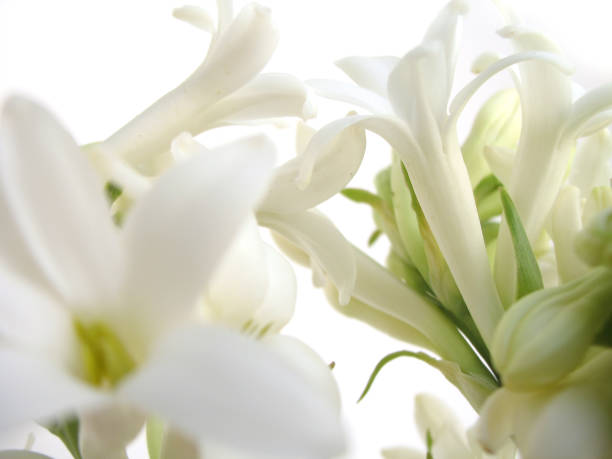
Pruning and Maintenance
To keep your tuberose plant thriving:
- Remove spent flowers (deadheading) to encourage more blooms.
- Allow foliage to yellow naturally at the end of the season before trimming back, as this helps bulbs store energy.
- In colder climates, dig up bulbs in autumn, dry them out, and store them in a cool, dry place until spring.
Common Pests and Problems
Like many garden favorites, tuberose may face a few challenges:
- Aphids and Mealybugs: These pests can be controlled with a strong water spray or neem oil.
- Root Rot: Caused by overwatering or poorly draining soil. Always ensure proper drainage.
- Fungal Issues: Encourage good airflow and avoid overhead watering to prevent disease.
Propagation of Polianthes Tuberosa
Growing more tuberose plants is rewarding, and with the right method, you can enjoy even more of their fragrant blooms. Here are the main ways to propagate Polianthes tuberosa:
1. Bulb Division
The most common method is dividing mature tuberose bulbs. Each season, bulbs produce small “offsets” around the mother bulb. After the plant finishes blooming and the foliage dies back, carefully dig up the clump, separate the offsets, and replant them in well-prepared soil. These younger bulbs may take one to two years to flower but will eventually produce strong, healthy plants.
2. Seeds
Tuberose can also be grown from seeds, though this method is less common and requires patience. Seeds are collected after the flowering season and sown in trays with a light, well-draining mix. Germination can take several weeks, and flowering may not occur for three to four years.
3. Tissue Culture
For large-scale cultivation, nurseries often use tissue culture techniques. This scientific method ensures disease-free, uniform plants but is generally not practical for home gardeners.
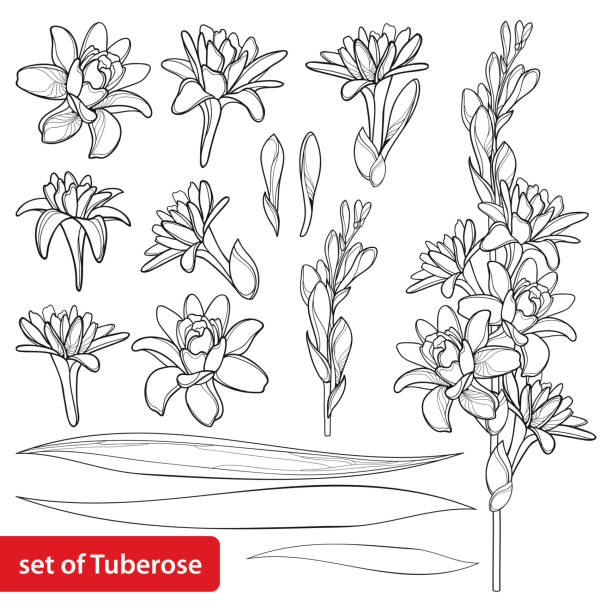
Expert Tips for Growing Tuberose Successfully
- Plant tuberose bulbs in clusters for a stronger fragrance impact.
- Choose a sunny location close to seating areas so you can enjoy the evening scent.
- For colder climates, grow tuberose in containers and overwinter bulbs indoors.
- Be patient—tuberose bulbs sometimes take a full season to flower, but the results are worth the wait.
Conclusion: Bring the Magic of Tuberose Into Your Garden
Polianthes tuberosa is more than a flower—it’s an experience. Its fragrant white blooms can transform an ordinary garden into a romantic, sensory haven. With the right care, even beginner gardeners can enjoy the timeless beauty of tuberose flowers.
So this season, plant a few tuberose bulbs and let their heavenly fragrance light up your evenings. Your garden and your senses will thank you.
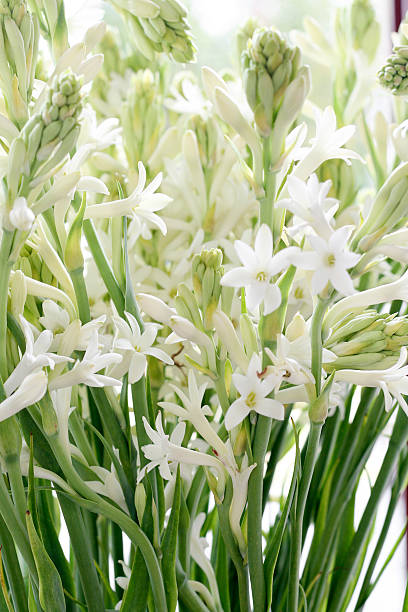
Frequently Asked Questions About Polianthes Tuberosa
1. Is tuberose easy to grow?
Yes, tuberose is fairly easy to grow if given the right conditions—plenty of sunlight, well-drained soil, and regular watering. It’s a low-maintenance plant that rewards you with fragrant blooms once established.
2. How long do tuberose flowers last?
Tuberose flower spikes can bloom for 2–3 weeks. If you stagger your bulb planting, you can enjoy continuous flowers throughout the summer and early fall.
3. Do tuberose bulbs come back every year?
In warm climates (zones 8–10), tuberose bulbs can stay in the ground and return each year. In colder areas, you’ll need to lift and store them indoors for winter protection.
4. Can I grow tuberose in pots?
Absolutely! Tuberose grows beautifully in containers as long as the pot has good drainage. Container planting also makes it easier to move them indoors during cold weather.
5. When does tuberose bloom?
Tuberose typically blooms in mid to late summer. The flowering season may vary slightly depending on your climate and planting time.
6. Why is my tuberose not flowering?
If your tuberose plant has lots of leaves but no flowers, it may not be getting enough sunlight or phosphorus-rich fertilizer. Older bulbs also sometimes need a rest season before they bloom again.
